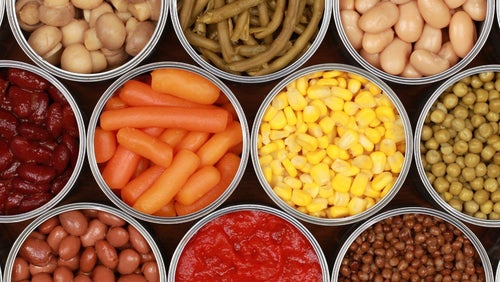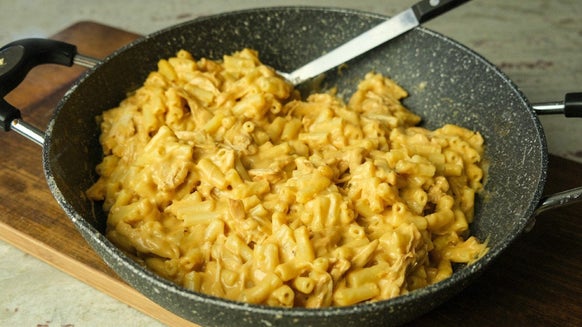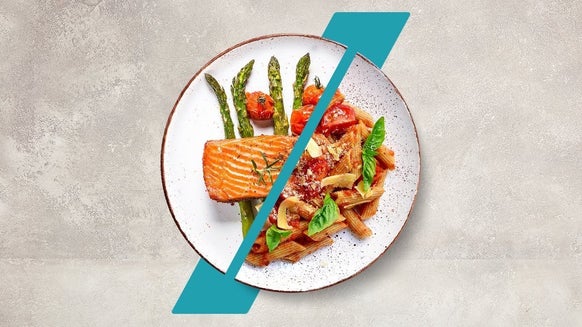
Thanks to the present climate, many of us are spending the majority of our day within our own homes. While working from home, spending more time with the family and having more free time to pursue your interests are incredibly positive takeaways from what has become the new norm, there are those of us who are finding it more and more difficult to manage their diet and, in particular, hunger.
There are two primary forms of hunger to be aware of, true hunger and emotional hunger. Understanding and identifying which you’re feeling will empower you to make the right choices and choose the right behaviours to curb your hunger effectively whilst achieving the most optimal outcome for both your physical and mental health.
True hunger vs. emotional hunger
How do I know which kind of hunger I am experiencing?
Well, there are distinct differences between the two states of hunger. True hunger can be identified as a feeling which starts gradually. Any type of food will satisfy true hunger and you will have the will power to stop once you’re satisfied.
As well as this, you will, most likely (although it depends on that individual), not having feelings of guilt afterwards or associate the foods you’ve eaten with a negative experience.
Emotional hunger, on the other hand, is more complex. It comes on suddenly and can be caused by a state of heightened emotion (such as increasing levels of stress or anxiety) or boredom. With emotional hunger, the person is typically craving specific foods, not satisfied once full, eating mindlessly and can even lead to feelings of guilt, regret, shame and even depression.1
Evidence-based approaches to combat hunger at home
Identification of the hunger you’re experiencing is important, but the approaches we take to address this hunger are arguably more so. It’s worth noting as well that the methods you use to address true hunger may not differentiate from emotional hunger (and vice versa) depending on the context of that situation.
We’ll distinguish methods you can use to tackle each form of hunger, but that doesn’t necessarily mean you can’t use those methods interchangeably between the two forms. They’re still addressing the same feeling after all — hunger, it’s just the drivers of that feeling change.
Managing true hunger
When it comes to managing true hunger, aside from simply satiating the feeling when it comes over us naturally by simply having food, there are multiple strategies we can use to effectively satiate ourselves and manage our weight (if we’re less active).
Protein
One of the most effective approaches is adopting a higher protein diet. Protein is not only extremely satiating, but is also the most thermogenic of the three macronutrients.
Interesting fact — did you know that we effectively get a 30% calorie discount with protein?2 It costs around about a third of its usable energy to metabolise it for whatever purpose our body needs at that time.
A diet providing between 1.2g to 1.6g of protein per kg of bodyweight per day has been shown to effectively help manage weight while also improving body composition.
When studied in isolation, higher protein meals out-perform lower protein meals in reducing perceptions of hunger and improving quality of life (in relation to improved satiation).3
So, not only can you help curb your rumbling tummy, but you’re also helping yourself get leaner and feel better too!
Fibre
The next best strategy for dealing with true hunger is increasing your fibre intake and your food volume.4,5 The body naturally produces a variety of signalling molecules that suppress hunger.
These are released when the tissue of the stomach and intestines are stretched, meaning that expansion of the stomach will improve satiety, regardless of what is causing said expansion.
Eating low-calorie or “calorie efficient” (i.e. achieving a lot of food volume relative to energy intake) foods, such as fruits and veggies, is one sure-fire way to cause this expansion effect.
Consuming more fruits and veg is also a great way to up your fibre intake. Fibre can soak up water and expand pressing against tissues and triggering the release of those satiating hormones we mentioned. It’s also a great way to keep you regular and improve your overall health.
Drinks
Low to no kcal carbonated beverages (and other fluids) are also a great tool to promote satiety acting much in the same as fibre and food volume would.6 They can also help address the dreaded “sweet tooth” (a sign of emotionally driven eating) if it rears its hungry head! Couple these with the previous strategies to really stave off hunger.
A final mention has to be made to caffeine-containing drinks, such as coffee, which have also been shown to help curb hunger too.7 They also increase the number of calories you expend, doubling up as an effective hunger and weight management tool.
Managing emotional hunger
Specific foods can give us a momentary sense of feeling good. Who doesn’t enjoy a good chocolate bar?
The issue with these foods is that they’re typically on the more calorie-dense side and richer in nutrients that may be detrimental to our health (such as trans fats or saturated fats).
The other major issue is the effect this can have on our relationship with food. As mentioned earlier, while these foods may provide a temporary escape from low mood, heightened emotions and boredom, they can leave us feeling worse about ourselves and developing a negative relationship with that given food (if not all food).
Mental health and dietary intake often go hand in hand. Many use food as an outlet for negative emotion (be it stress, anxiety, or whatever else), which may result in a negative feedback loop. We eat because we feel bad and we feel bad because we eat.
Identify the triggers
Identifying the triggers and situations which ultimately lead to this and employing strategies we discussed in addressing true hunger, working on replacement behaviours, and approaching food intake more mindfully may all help address emotionally driven eating. Why are you feeling this way? Are you physically hungry or is a mood driving this?
Stress and stress management also play a critical role in emotional eating. Now more than ever we have to take care of the organ between our ears and the importance of regular, healthy exercise and sleep patterns can’t be undermined.
Boredom-induced eating has been described as “increased desire for satisfying incentive stimulation, but mainly by the drive to escape monotony.”8 Lack of stimulation, as a result of being stuck inside more and not having the same level of human interaction, has become a real issue for some.
Use the increased free time to work on a new hobby, communicate with friends or family, engage in some exercise and or other self-development skill or project to provide that stimulation which you’re craving.
Take-home message
Understanding hunger, identifying which you’re experiencing, and managing it appropriately has become increasingly more important. Trial multiple strategies and approaches until you find the ones which fit you and your lifestyle best and use this free time to fuel your ambitions, not give up on them.
READ THIS NEXT:

10 Nutrient-Dense Tinned Foods To Stock Up On
No, a six-pack of tinnies didn't make the list, sorry....

What Are Refined Carbs? Are They Bad For You?
The complex world of carbs......

1. Konttinen, H., Van Strien, T., Männistö, S., Jousilahti, P., & Haukkala, A. (2019). Depression, emotional eating and long-term weight changes: a population-based prospective study. International Journal of Behavioral Nutrition and Physical Activity, 16(1), 28.
2. Westerterp-Plantenga, M. S., Nieuwenhuizen, A., Tome, D., Soenen, S., & Westerterp, K. R. (2009). Dietary protein, weight loss, and weight maintenance. Annual review of nutrition, 29, 21-41.
3. Dhillon, J., Craig, B. A., Leidy, H. J., Amankwaah, A. F., Anguah, K. O. B., Jacobs, A., … & McCrory, M. A. (2016). The effects of increased protein intake on fullness: A meta-analysis and its limitations. Journal of the Academy of Nutrition and Dietetics, 116(6), 968-983.
4. Brownlee, I. A., Chater, P. I., Pearson, J. P., & Wilcox, M. D. (2017). Dietary fibre and weight loss: Where are we now?. Food Hydrocolloids, 68, 186-191.
5. Żurakowski, A., Zahorska-Markiewicz, B., Olszanecka-Glinianowicz, M., & Kocelak, P. (2006). Effect of Meal Volume on Hunger and Satiety in Obese Subjects: Volume of meal and satiety. EJIFCC, 17(4), 167.
6. Catenacci, V. A., Pan, Z., Thomas, J. G., Ogden, L. G., Roberts, S. A., Wyatt, H. R., … & Hill, J. O. (2014). Low/no calorie sweetened beverage consumption in the National Weight Control Registry. Obesity, 22(10), 2244-2251.
7. Tabrizi, R., Saneei, P., Lankarani, K. B., Akbari, M., Kolahdooz, F., Esmaillzadeh, A., … & Asemi, Z. (2019). The effects of caffeine intake on weight loss: a systematic review and dos-response meta-analysis of randomized controlled trials. Critical reviews in food science and nutrition, 59(16), 2688-2696.
8. Havermans, R. C., Vancleef, L., Kalamatianos, A., & Nederkoorn, C. (2015). Eating and inflicting pain out of boredom. Appetite, 85, 52-57.







